“Some dogs are born to hunt and some destined to live in
sedentary style, never getting far from the comfortable
fireside of home. Men are not much different.”
-A. Russell, Grizzly Country
I thought I’d caught sheep fever at my first Wild Sheep Foundation “Sheep Show” in Reno, Nevada, in January of 2015. But I became chronically addicted eight months later when I belly-crawled across the eroded peak of an unnamed mountain behind my guide and mentor, Jared, only to look through his spotter at the breathtaking full-curl sweep of a Stone, some five hundred meters below us. F***ing pinch me!
Prior to this life-altering moment, I’d never laid eyes on any sheep, let alone a full-curl Stone ram. That beautiful, alien-like creature with its golden-brown horns, blue-black saddle, and cream white throat, face, and rump will forever be burned into my memory. Now, over a year later, with two seasons as a wrangler behind me my thoughts drift back to so many incredible moments. Numerous encounters with sheep, caribou, grizzly and Alaskan moose. The sights, sounds, and smells of several hundred kilometers of horse-trail that included three unplanned saddle ejections and a shattered humeral head in my right shoulder. It’s a bad pun, but it’s been a hell of a ride.
* * *
I suppose you’ve got to pay a price to live your dream. I didn’t grow up hunting, working with horses, or hiking mountains. A few months before my first job as a wrangler I’d never ridden a horse; needless to say, I wasn’t exactly overqualified. I needed to learn and grow as an outdoorsman and pursue my passion. Before moving to the coastal mountains of Vancouver Island, I often waded through the spring-fed rivers and marshy wetlands of southern Ontario in pursuit of waterfowl, and hunkered down in tree stands along corn fields, hardwoods, and cedar thickets awaiting a glimpse of an elusive whitetail buck. The vast mountains and game rich valleys of the west became my graduate school.
I laid my hands on my first Stone sheep a few weeks later. Even now the memory is magical. Jared had left me in an alpine meadow with the horses for four days — as one does when a horse wrangler is in camp — whilst he and the client backpacked after a band of rams we had observed cruising over a mountain pass. I would’ve preferred to be along for the stalk, but the horses needed tending and I was happy to spend some time catching up on sleep, reading, and watching the horses meander about the grassy meadow below my tent. A few days later, I got a message on the sat phone. “Hey bud, hope you are doing alright. We got a ram down here tonight; after you’ve caught all the horses in the morning, hike over the mountain behind camp and come find our tent. We’re in the next valley over.”
* * *
I rolled over in my sleeping bag, watching the embers flicker through the vent in the woodstove, thinking about the “trail” we would be riding out. I’d never ridden it, but the other guide in camp told me that it’s not marked or well-traveled and that the last couple hours are essentially a bush-bash to the highway. I figured it couldn’t be much worse than the hundred-and-sixty-plus kilometers of relatively uncut trail I’d traveled to get from August’s sheep camp to the moose valley I was now in. How three months in the mountains went by so quickly astounds me. It seems like yesterday our first sheep client came in, chasing his slam ram at the young age of 33. After a six-kilometer stalk (bless those horses’ souls), he anchored his beautiful ten-year-old ram with one well-placed shot at 441 yards. I can still hear his voice groaning through the dark ahead of me as we rode back into camp a few hours after midnight, shins bruised from the lashings the jack-pines gave us.
I’d learned so much over the course of this season. About horses in particular. Their performance is an essential aspect of a smooth hunt. Much like their human handlers, not all horses work well together. Observe them carefully, and you’ll notice a hierarchy. One day I placed several wooden trays of oats around for them to feed upon. A middle aged bay named Reggie had a particular dislike for a substantially larger paint named Cousin. I watched for several minutes as Reggie harassed Cousin, biting at his withers and kicking until Cousin moved to the next tray full of oats, only to have Reggie abandon his claim to push Cousin off another. What he had against the large paint I’ll never know. But it taught me you can’t indiscriminately pair any two horses together on a string and expect a harmonious effort.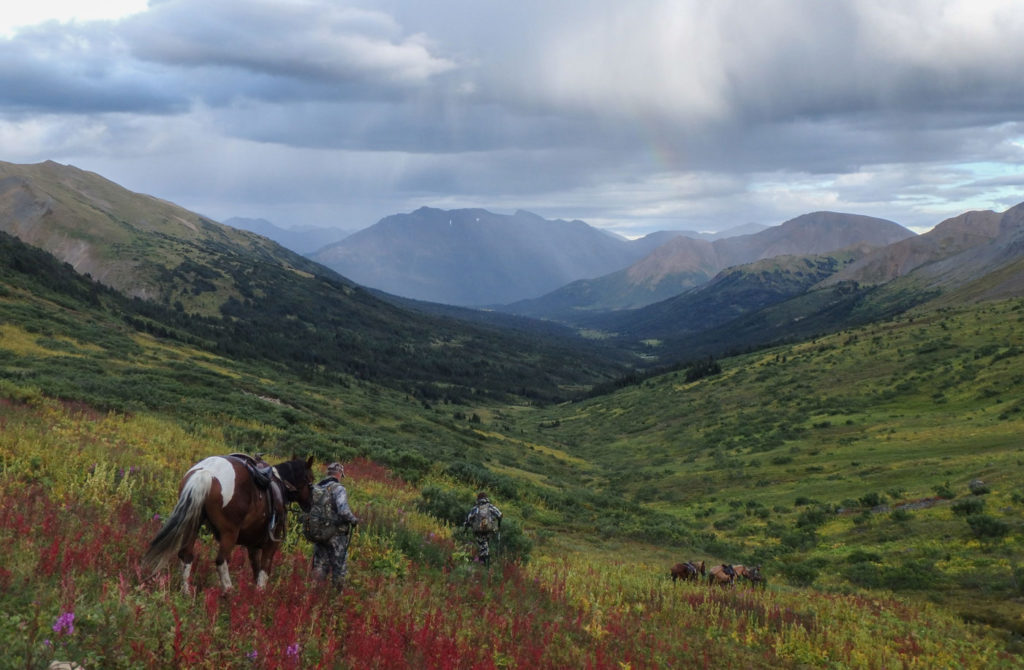
One of the most remarkable experiences I had with horses this year came in the last few days of September. The temperatures had dropped significantly, ice gradually building nightly along the banks of the river that cut through our camp. Each morning I would check the mercury’s steady decline in my headlamp before hiking down the valley to push horses back to be saddled for the day. I’ve no way of knowing how cold it was up in the mountains where we would hunt moose, but it would hover between fifteen- to eighteen-below in the valley bottom each morning. Late one afternoon the weather took a turn, and crisp blue skies turned white as a blizzard howled down the valley towards my hunter and I. We watched as the visibility in our binoculars waned from kilometers to centimeters, and after some time decided it prudent to pick our way back to camp. On a more normal evening, we would find our way through the dense willows on a myriad of moose trails, until we connected with an old horse trail halfway down the mountain that wound around the lake before dropping into the main valley of our camp.
My horse that day, Thor, was a young gelding with energy but little experience as a mountain horse. Left to his own devices, Thor would immediately peel away from whatever trail I had chosen to bash through the willows in a seemingly random direction. Wrapped in the cloak of a blizzard, it was nearly impossible to see the trail. I had no desire to fight Thor’s natural tendency to wander, so I told my hunter to pull in-front of me and to “give your horse his head.” His mount was a veteran named Fred with sharp senses. I’d had the pleasure of riding Fred a few times in the pre-season, and he was immediately selected as a “hunter” horse for his smooth gait and sure-footed intelligence. One of the many perks of laying down the coin for an expedition-style hunt is riding the most docile and well-mannered horses, and one could ride Fred hands-free and blindfolded with no fear of mishap.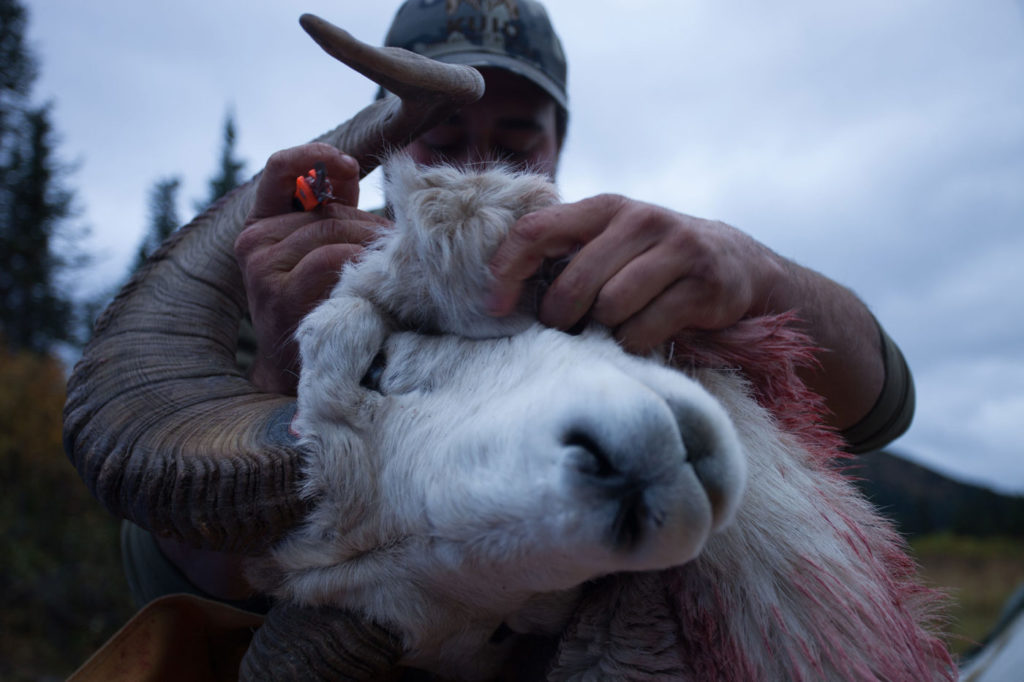
* * *
I crawled out of my sleeping bag and slipped into my Crocs, placing a few last chunks of wood into the fire before sleep. Back in the welcome cocoon of my mummy bag, the first hunt I guided came to mind. I recalled my nervousness as my client stepped off the bush plane onto our crude runway beside the river. A quiet man some forty years my senior, he introduced himself as John, a retired blue-collar carpenter from a tiny town in Utah. He had dreamed of hunting Alaskan moose but never imagined it happening due to the cost of such hunts. One day his lifelong friend and hunting partner phoned him to say that he had booked the hunt for both of them, all expenses paid, as a celebration of thirty years owning his lucrative defense contracting business.
Over the next several days, John regaled me with entertaining stories of riding mules in the Rocky Mountains of his home state, of elk and deer hunts from decades past, and lessons learned along the way. After a couple days of cow sightings with a few immature bulls, and a good bull down for his companion, they were off to the north in search of caribou, and we were combing the meadows and draws, eager to find a bull for ourselves. Mid-afternoon that day while picking apart the rolling willow flats below us, I spotted a few cows several kilometers out from our high ridge vantage point. We watched the six dark shapes move effortlessly through the tangle of willow and jack-pine, feeding nonchalantly between patches of timber in the benches of willow across the draw from us. With the rut in swing, I assumed a bull would be in hot pursuit, or at least passing the warmer portions of the day in the shaded timber nearby. After a good time I noticed another moose, off from the ladies with its head in the timber, maybe a hundred yards away and facing them. As I turned my attention to the lone moose, I noticed it acting markedly different from the cows we had been observing, periodically breaking out into a clean run straight towards the cows, only to have them run off and resume feeding a safe distance away. With the sun in our eyes it was difficult to tell if we were catching glimpses of antler; however, after one failed attempt to close ground with the cows he furiously raked a large clump of willows in front of him.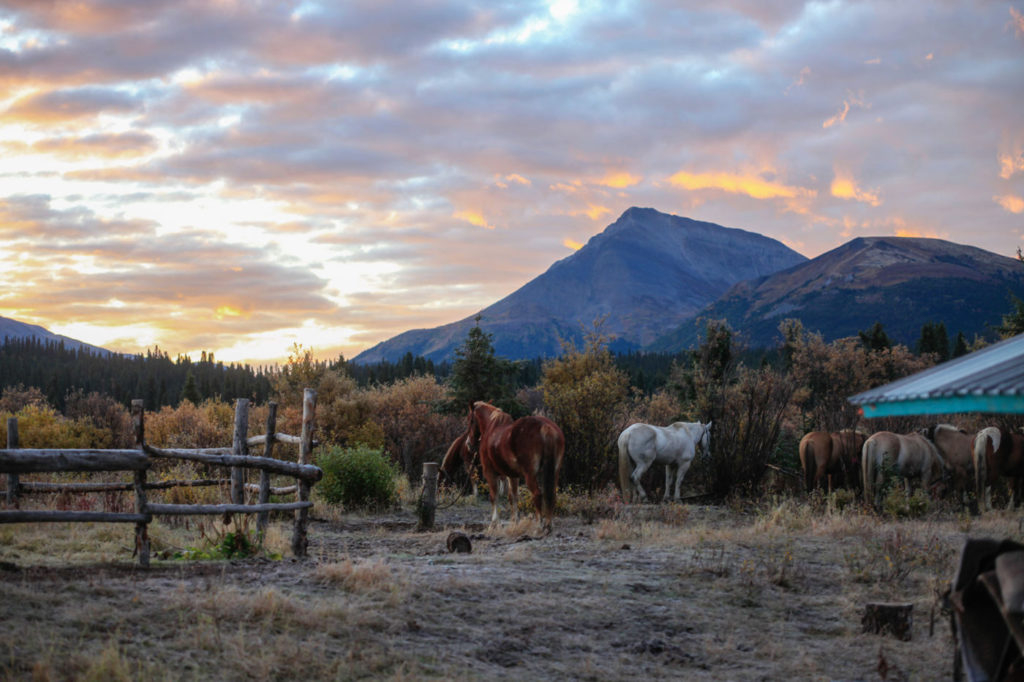
Referencing a few rolling knobs dotted with pines, we saddled up and covered ground. It is worth mentioning that when dealing with expansive valleys filled with willow, distances can seem much shorter and easier to navigate than they really are. An hour later, after crossing a creek and skirting around a few deceivingly deep bogs, we had cut the distance down to a hair over a kilometer. My intent was to better judge the size of our bull and let John determine if it was a moose he would be happy to take. We had once again located the cows, which had not moved more than a couple hundred yards from where we first spotted them, but the bull was nowhere to be seen. Hoping to coax him out of the thickets, I cow called repeatedly, to no avail. The wind was blowing hard into our faces; a blessing and a curse. At three in the afternoon, with a two-hour ride back to camp and daylight giving way to darkness in a few hours, I decided that we had to press closer. We simply couldn’t afford to wait it out, and I was confident that the wind and terrain were in our favor.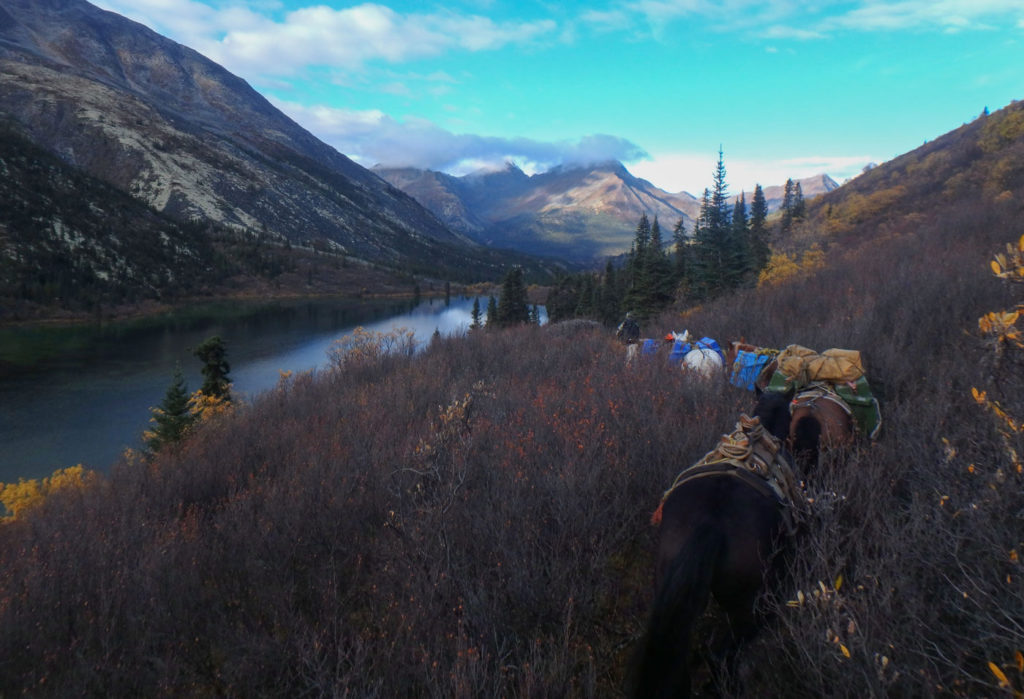
The wind was still strong at our faces as I tied up our horses and we crept through the pines to the edge of the stand. With a few straggling trees in front of us, we crouched down and looked through our glass. Tense minutes passed with nothing to show until I spotted a large ear flicking in the willows, whispering to John its location as he picked it up as well. One, two, five, six cows made themselves visible as they moved from the shallow draw up onto the willow bench, in and out of the timber two hundred meters in front. I put down my binoculars and cupped my hands over my mouth, letting out a few desire-filled cow-calls in the hope our bull was in earshot. As I paused between calls, I lifted my binoculars and scoured the willows surrounding the draw; a few of the cows perked up, their great dished ears pointing intently in our direction. As I swung my gaze across a particularly reddish clump of willow, I noticed a mass of bone protruding from the right. John whispered to me that he had picked it up as well. Another cow call and he moved slightly, his whole head in view now.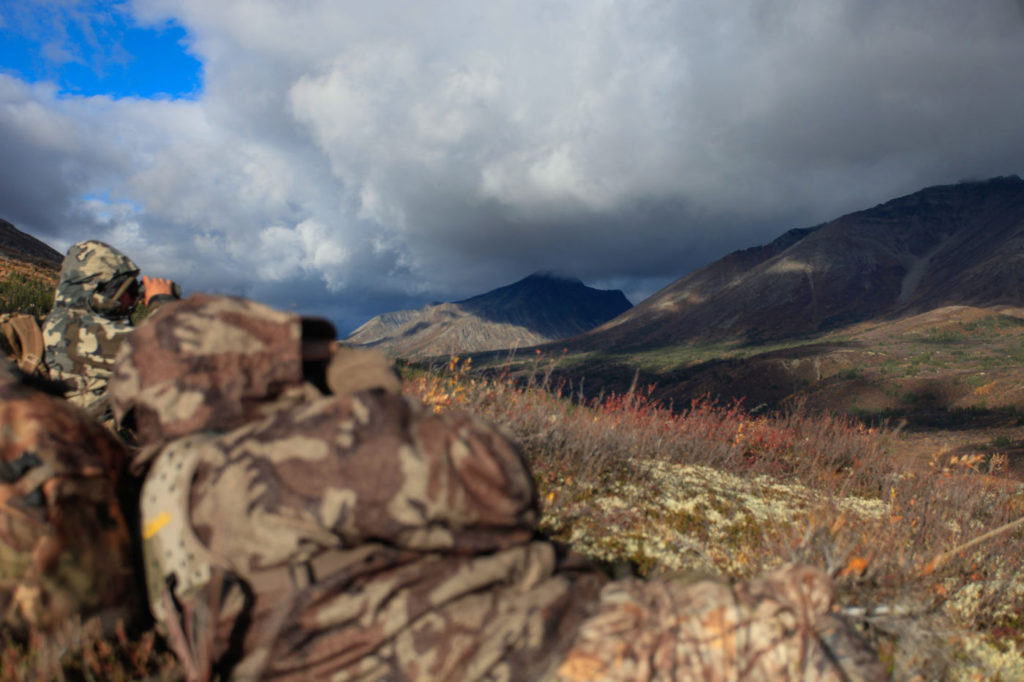
“He is; not a giant but a good bull. Would you be happy with him?” I asked John, with both of our gazes locked on the giant head swaying back and forth in front of us.
He answered by slipping a round into the chamber of his 300 WSM. I prepared to let one final cow call out. We had his attention, but my ghost cow was not enough to bring him out of the willows so I followed up with a few short aggressive bull grunts. Then I furiously thrashed the willows to my left, swinging my stainless 338 Win Mag by the barrel like a bat. The threat of another bull pushed him over the edge and he immediately broke out of the thick draw in a charge, stopping just shy of thirty yards from us to rake the willows and let forth a deep chested “WOHH” while staring us down head on.
John was adamant about a clean broadside shot, and we had previously discussed shooting until the moose was down. Neither of us was particularly enamored with the idea of having one expire in one of the many pocketed bogs in the area, and the bull was currently standing in a favorably short cluster of willow. Time seemed altered. Seconds felt like minutes. The bull gave one final violent thrash of the willows, breaking one off in his antlers. He turned broadside. John’s rifle barked.
The bull spun about-face as John racked another shell and followed up. The great animal folded on the spot, 20 meters distant. I recall my left leg shaking violently with nerves as I turned to congratulate John, his face a mix of elation and disbelief at the size and proximity of the moose.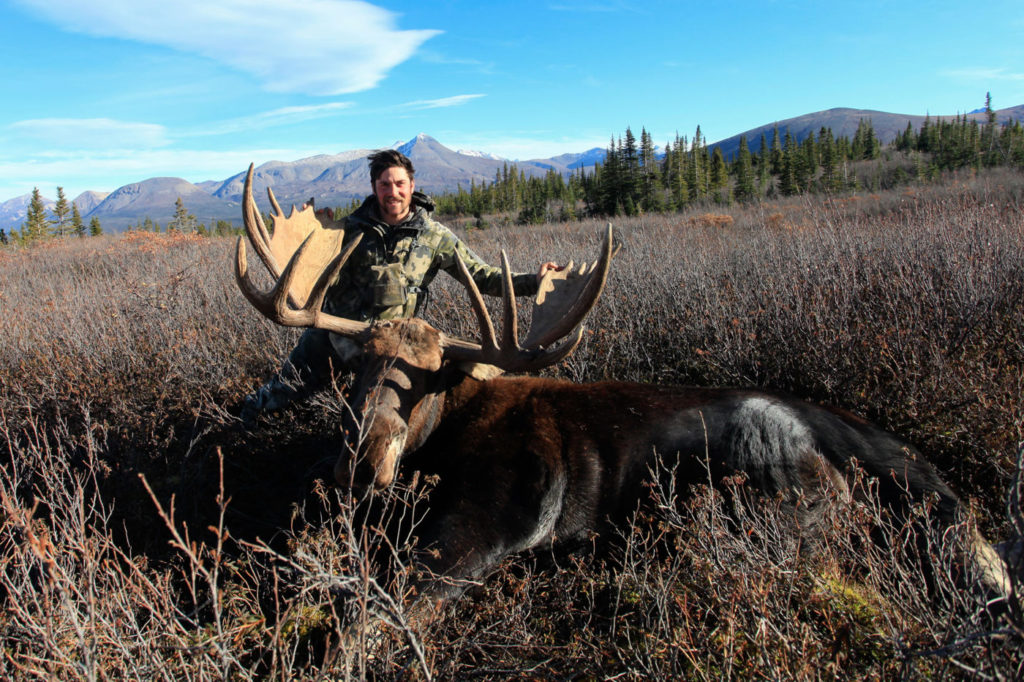
* * *
I know I’ll revisit that memory often, but then, the wind whistling through the cracks in plywood walls and the wood popping in the stove brought me back to reality. In my sleeping bag I felt thoroughly exhausted and not excited about tomorrow’s long, cold trail. Moreover, I was sad to leave the mountains I’d called home for the past three months. I picked up my phone to set an alarm for 4:30 am, and noticed in my notes the quote I jotted down a few nights earlier while reading Russell’s book, Grizzly Country:
“Some dogs are born to hunt…”

